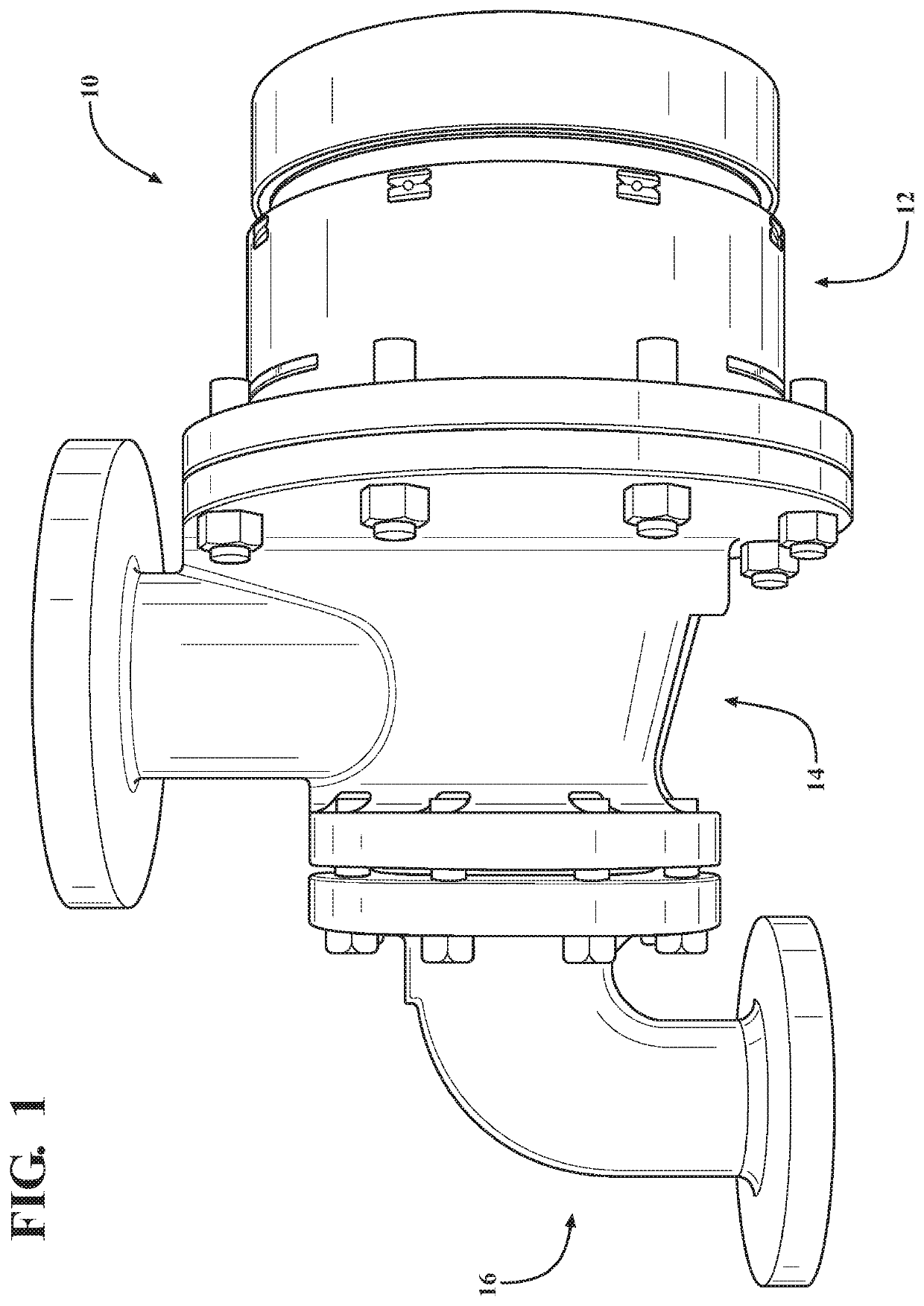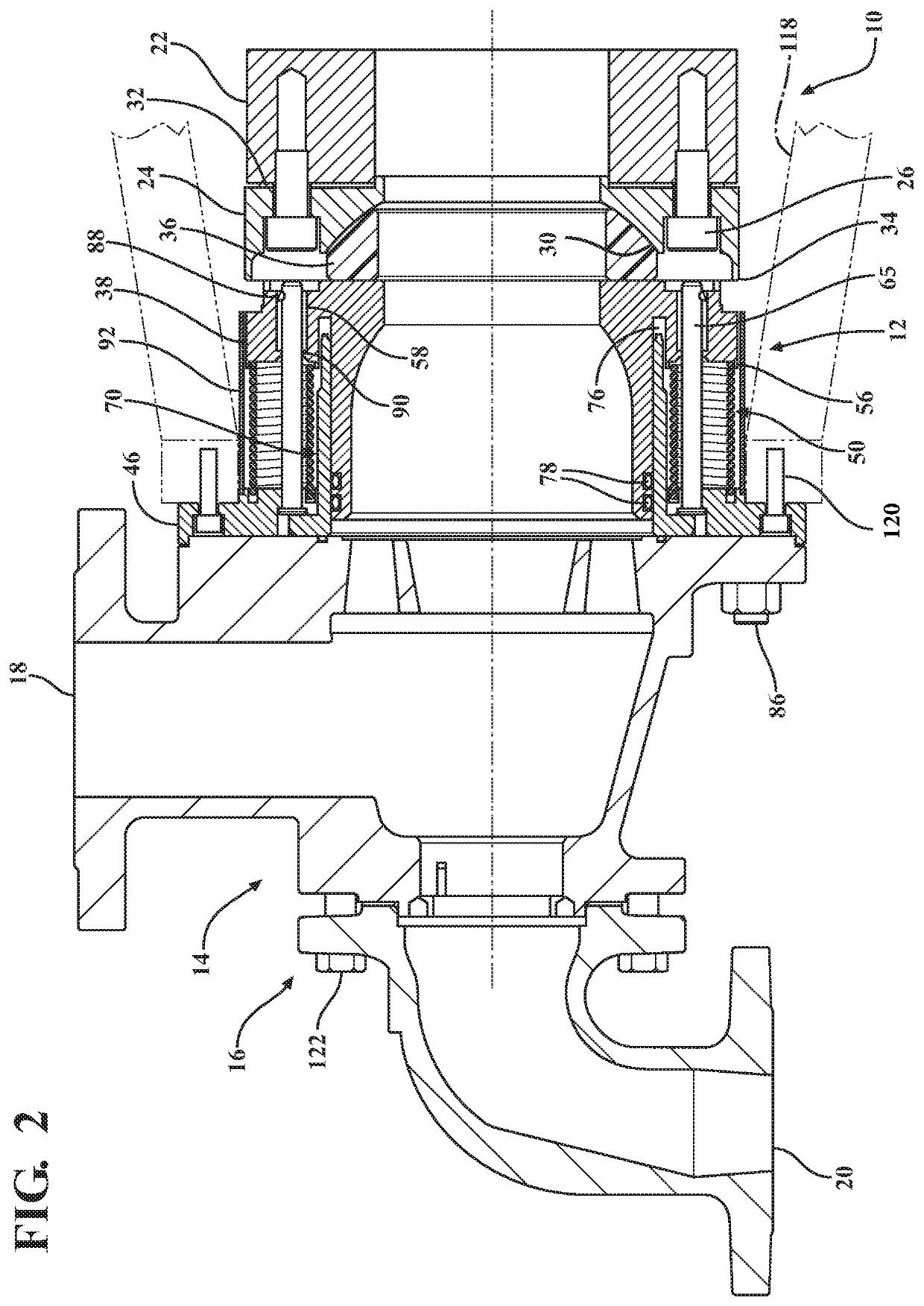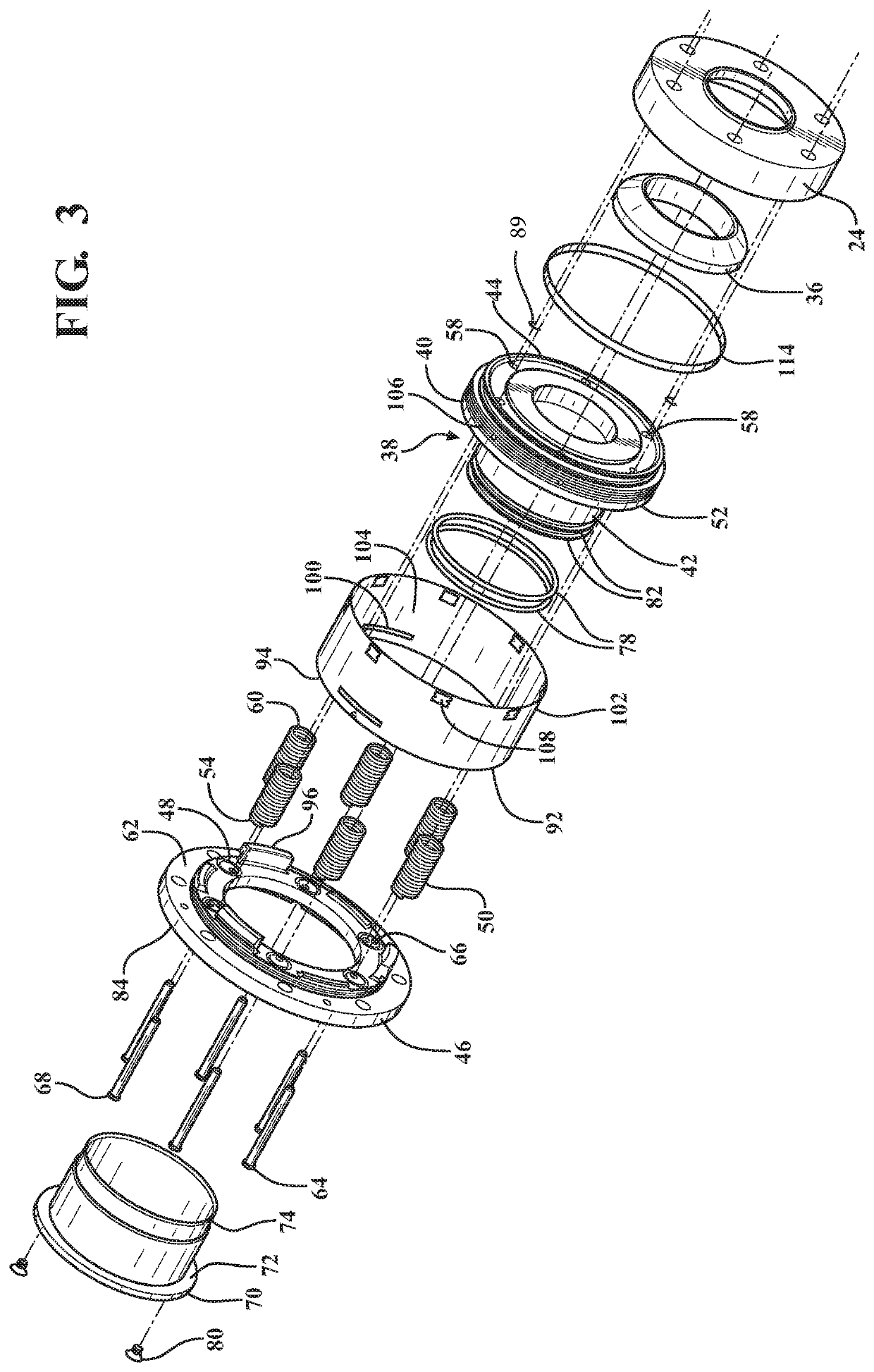Rotary Joint Shroud Having Set-Up Gauge and Seal Wear Indicator
a technology of rotary joints and gauges, which is applied in the direction of adjustable joints, mechanical equipment, papermaking, etc., can solve the problems of reducing the thickness affecting the performance of the seal ring, so as to avoid or reduce corrosion
- Summary
- Abstract
- Description
- Claims
- Application Information
AI Technical Summary
Benefits of technology
Problems solved by technology
Method used
Image
Examples
Embodiment Construction
[0024]The present disclosure relates to a rotary joint or rotary joint cartridge 10 which may be used in combination with a rotating drying cylinder (not shown) of a paper manufacturing machine (not shown). The rotary joint 10 provides a sealed connection to the drying cylinder to communicate pressurized steam, water, and air to and from the drying cylinder. As seen in FIG. 1, the rotary joint 10 has a body portion 12 having one end connected to the drying cylinder and an opposite end connected to an inlet coupling or joint body 14 which receives pressurized steam and air from a pressurized source (not shown). An outlet coupling 16 is connected to and in communication with the inlet coupling 14 to direct steam, condensate, and air from the drying cylinder. Separate passageways (not shown) are provided to allow pressurized steam and air to flow from the inlet coupling 14 to the drying cylinder. A syphon (not shown) is installed down the center of the inlet coupling 14, seated against...
PUM
 Login to View More
Login to View More Abstract
Description
Claims
Application Information
 Login to View More
Login to View More - R&D
- Intellectual Property
- Life Sciences
- Materials
- Tech Scout
- Unparalleled Data Quality
- Higher Quality Content
- 60% Fewer Hallucinations
Browse by: Latest US Patents, China's latest patents, Technical Efficacy Thesaurus, Application Domain, Technology Topic, Popular Technical Reports.
© 2025 PatSnap. All rights reserved.Legal|Privacy policy|Modern Slavery Act Transparency Statement|Sitemap|About US| Contact US: help@patsnap.com



